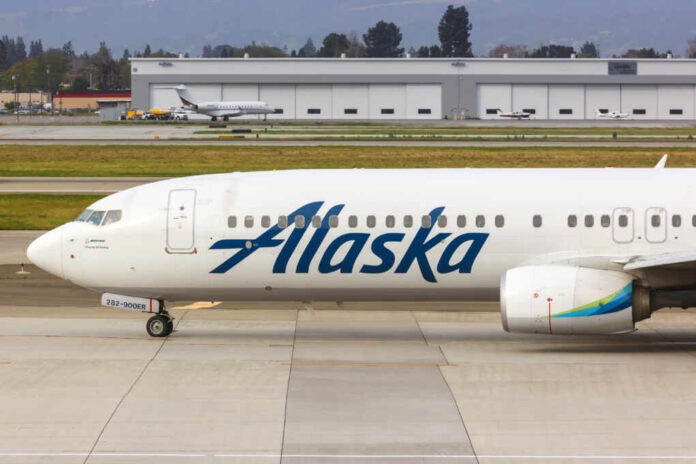
On Saturday, federal authorities mandated the immediate grounding of select Boeing 737 Max 9 aircraft for inspection following an incident involving an Alaska Airlines plane that experienced a fuselage blowout.
These inspections typically require four to eight hours per aircraft and are impacting approximately 171 planes globally.
In a recent statement, Alaska Airlines confirmed that out of their fleet of 65 Boeing 737 Max 9 aircraft, crews had examined the paneled-over exits during recent maintenance on 18 planes, allowing them to resume service on Saturday. Inspections for the remaining planes were scheduled for completion in the upcoming days.
Late Friday, an Alaska Airlines aircraft experienced a fuselage blowout shortly after takeoff at an altitude of 3 miles above Oregon. The incident necessitated an emergency landing, with all 171 passengers and six crew members wearing oxygen masks. Fortunately, there were no serious injuries as the aircraft, which had depressurized, safely returned to Portland International Airport approximately 20 minutes after departure.
BREAKING: Alaska Airlines plane makes emergency landing in Portland, Oregon after window blows out in mid-air.
Several items, including phones, were sucked out of the plane when it suddenly depressurized. Everyone is safe. pic.twitter.com/BtOB1RU3tn
— BNO News (@BNONews) January 6, 2024
Jennifer Homendy said in a Saturday afternoon press release that officials are actively searching for the panel-over exit door. She said they had a strong lead on its location near Oregon Route 217 and Barnes Road in the Cedar Hills vicinity west of Portland.
Homendy asked anyone who finds parts to “please, please contact local law enforcement.”
Homendy emphasized the fortunate timing of the event, as the aircraft had not yet attained its cruising altitude, which could have potentially posed risks with passengers and flight attendants moving about the cabin.
She clarified, “No one was seated in 26A and B where that door plug is. The aircraft was around 16,000 feet and only 10 minutes out from the airport when the door blew.”
Seats 26A and 25A were missing their headrests, and seat 26A had a portion of its seatback missing. Additionally, the area around the blowout contained scattered clothing items.
In 2013, another incident occurred when an Asiana Airlines flight arriving from South Korea crashed at San Francisco International Airport, claiming the lives of three out of the 307 people onboard.
Evan Smith, a passenger, recounted that in the row where the panel blew out, there was a mother and her son. The force of the blowout was so strong that it tore the child’s shirt off, and it was sucked out of the aircraft.
Smith said, “You heard a big loud bang to the left rear, a whooshing sound and all the oxygen masks deployed instantly, and everyone got those on.”
Alaska Airlines CEO Ben Minicucci stated that the inspection process for the company’s 737-9 aircraft may require several days to finish.
The United States has not witnessed a significant crash involving a domestic passenger carrier since 2009, when a Colgan Air flight tragically crashed near Buffalo, New York, resulting in the loss of all 49 individuals onboard and one person on the ground.
















